
Für eine deutsche Übersetzung dieser Seite einfach die Brandenburger Flagge anklicken
 |
Click the Brandenburg Flag for a German translation Für eine deutsche Übersetzung dieser Seite einfach die Brandenburger Flagge anklicken |


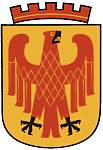 |
Home Towns - Potsdam, GermanyBreite Straße (Wide Street) |
 |


 |
This site is part of our Potsdam, Germany site. Click the left turn sign to get back to the
Potsdam Start Site.
 If you came here from our Vacation 2010 sites, click the green traffic light to return. |

|



|
| Under different names, Potsdam's "Wide Street (Breite Straße in German) has been connecting the center of town with the western parts since 1683. Until World War II, it ended at the Neustadt Gate. The gate was destroyed in the war and in 1973, the street was extended further west. |


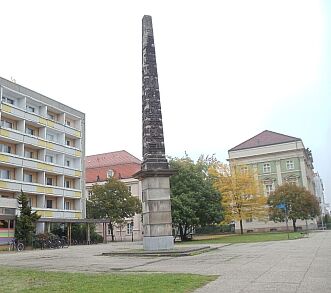 |
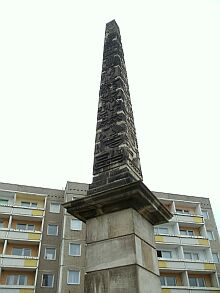 |
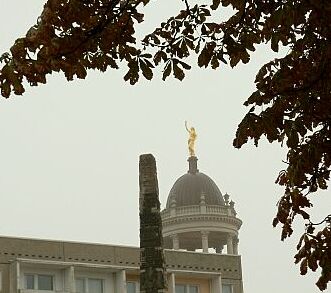
|
 |
Our tour down Wide Street starts at an Egyptian looking obelisk, designed by Georg
von Knobelsdorff in 1753. It is the only remaining
piece of the original
Neustadt Gate. In case you wonder what the hiroglyphs mean: Nothing! Egyptian hiroglyphs were not deciphered until the 1820s and the "writing" on the obelisk is pure fiction.  The obelisk was restored and put back in place near its original location in 1981. |
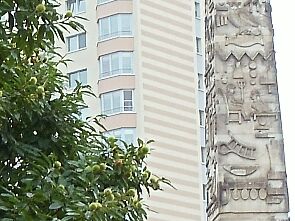
|



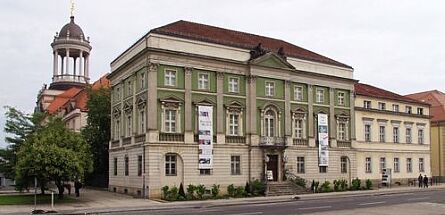  |
xxxxxxxxxxxxxxxxxxxxxxStändehaus
There are a lot of interesting looking and well preserved baroque houses in this street. The first one that caught our attention is now
Potsdam's Museum of Natural History. |
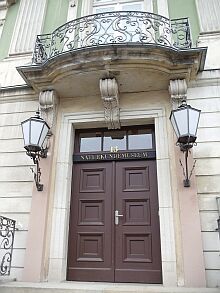 |
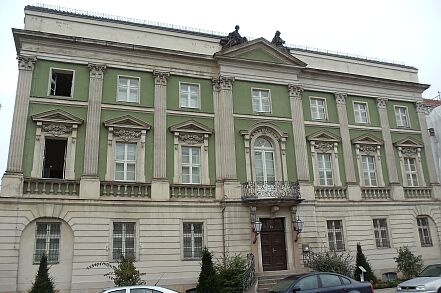 |
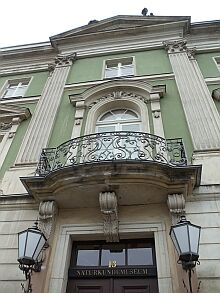
|



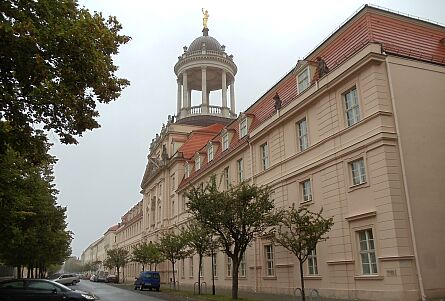 |
XXXXXXXXGreat Military Orphanage
Right next is Potsdam's largest Baroque Ensemble, the
Great Military Orphanage - a complex of four buildings, covering
an entire city block. |

Soldier King Frederick William I was frugal
in everything that didn't concern the military. But when it came to his soldiers, he spared neither efforts nor expenditures. And that included
the many surviving dependants of soldiers who died in the costly
War of the Spanish Succession (1701-1714). In 1725, the foundation took care of 600 orphans and at the beginning of the Silesian War in 1740, over 1,500 children lived here. While this orphanage was a huge charitable effort by the Prussian state, it must be mentioned too that the children took very much care of their own food and accommodation, often working up to ten hours a day, very often "rented out" to local businesses - a dark back side of Prussian Role of Law. |
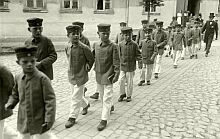
|

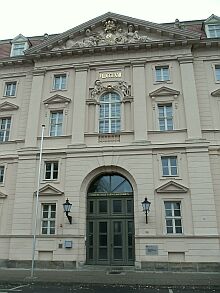 |
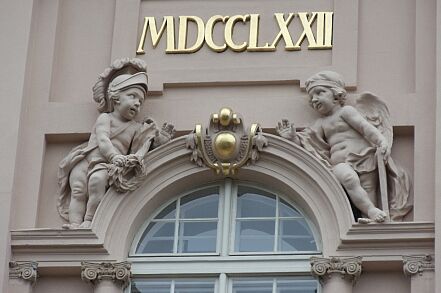 |
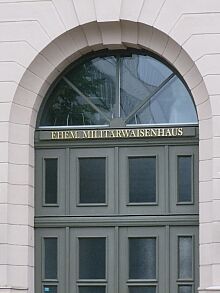
|
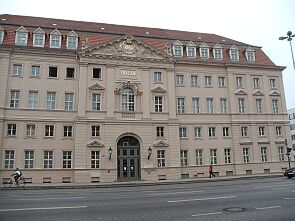 |
 |
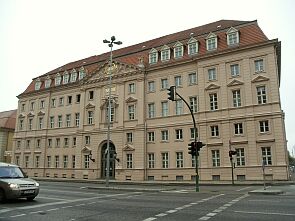
|
 |
The temple on top of the main building, called Monopteros, was designed by Carl
von Gontard and reaches a height of 85 feet.
It is topped by a sculpture called Caritas, Latin for Charity. The original figure was designed by sculptor Rudolf
Kaplunger. The temple was destroyed in World War II and the sculpture was lost. Rumor has it, that the copper-made "Charity" was melted to produce some of the last bullets of the war.  The entire ensemble was restored in 2004 and a replica, created by sculptor and conservator Andreas Hoferick, now commands again Potsdam's skyline.  In 2009, blogger, historian and tour guide Peter Degener had the chance to accompany a conservator on an inspection of the temple and the 12 feet tall sculpture. Check out his pictures (below). |
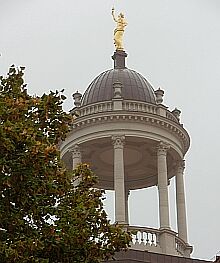
|

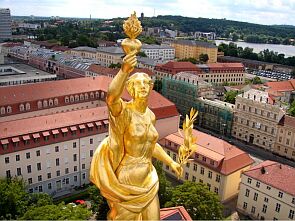 |
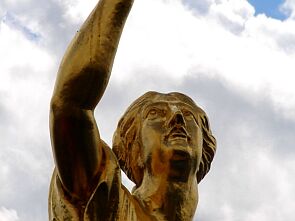 |
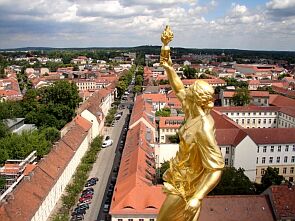
|



 |
XXXXXXXXHiller & Brandt Houses  Across the street from the Orphanage are two of the most marvelous baroque houses in town, the Hiller & Brandt Houses, named after their first tenants, merchant Johann Friedrich Hiller and tailor Johann Gebhardt Brandt.  Unfortunately, when we walked down Breite Straße, the building underwent some maintenance. So we borrowed an unobstructed picture from PotsdamWiki (below left).  The elaborate front of the building was designed by Georg Christian Unger and financed by King Frederick the Great. Unger's design was so successful that it earned him over 300 contracts for public buildings and living quarters in Potsdam and Berlin. |
 The small house between the two four-story buildings was used to house soldiers. Every house owner in Potsdam had to accommodate a certain number of soldiers from the large Potsdam Garrison. Often, this was done by adding a smaller side wing to the main building.  Frederick the Great was well known for his designs of fake facades. For esthetic reason, the windows in the forefront are all symmetrical, but they don't always correspond to the rooms behind them and quite a few of them are fake (picture below right). |
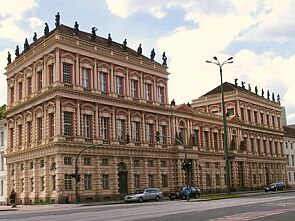 |
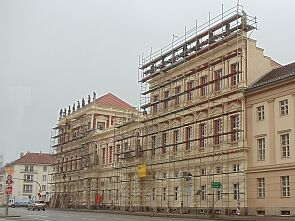 |
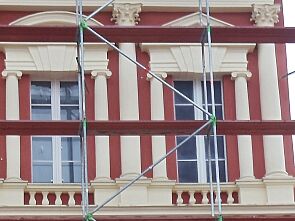
|



  |
XXXXXXPreacher-Widow's House
Right next to the Hiller & Brandt Houses stands "Potsdam's Oldest Building." It was built around 1674. Most likely, the original building was
designed by Johann Gregor Memhardt and built
by Joachim Ernst Blesendorf.
Electress Sophia Dorothea, wife of the
Great Elector, dedicated the house to the widows and
children of Protestant priests. |
 |
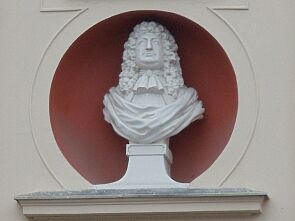 |

|



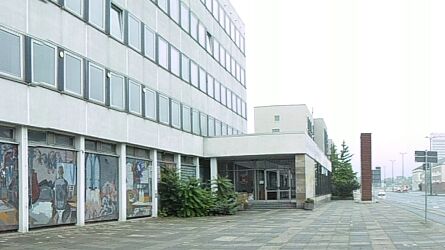 |
XXXXXXXXXXXXXRechenzentrum
The next block was once the location of the
Garrison Church (see next chapter). It is now occupied by a
Data Processing Center, (Rechen-zentrum in German).
The building itself is rather dull - just one of the thousands of concrete slab buildings in town - but it presents a rather interesting piece
of art, one of the last big examples of Socialist Realism. |
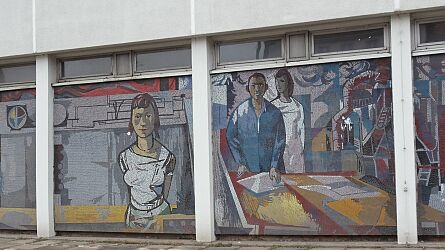 |
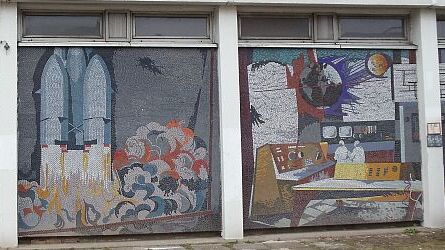
|

|
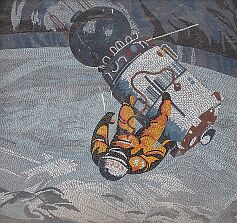 |
Volker's favorite segment was a picture of the first
space walk in history, conducted by Russian
Alexsey Leonov in 1965. Ironically, this part of the mosaic turned out utterly wrong. There were supposed to be three large tiles, composing a three-fold picture of earth. Instead, the tiles were placed with the wrong orientation, creating nothing but a giant mumble-jumble, that was not discovered until 2009. |

 
|
| To the right, you can see what the three tiles look like (above) and how they were supposed to look like (below). |



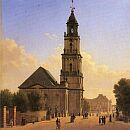 |
XXXXXXXXXXXXXXXXXXXXXXXXGarrison Church
The location of the Data Processing Center was once the location of Potsdam's most famous church, the
Garrison Church, built in 1735, burned out in the last days
of World War II and demolished in 1968. |

|

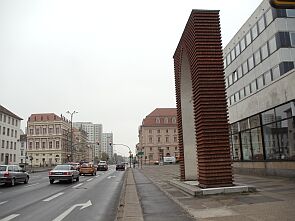 |
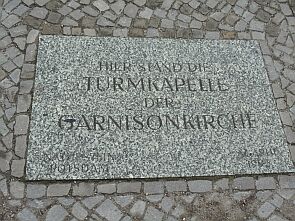 |
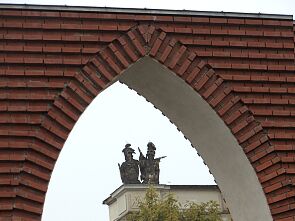
|



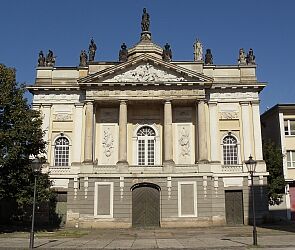 |
XXRoyal Exercise Grounds
The "Royal Exercise and Riding Hall" was built originally in 1734 based on planes by Pierre
de Gayette.
It stretched 500 feet all the way to the City Canal and was soon only called the
Long Stable. |
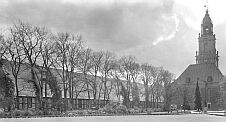
 
|



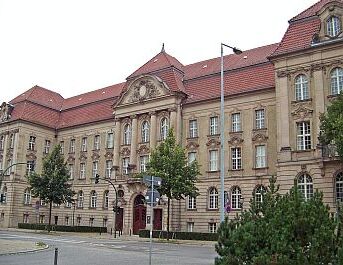 |
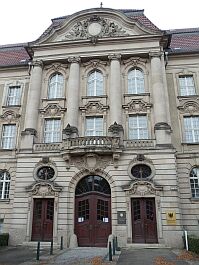 |

|
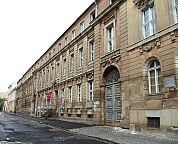 |
There are a lot more interesting baroque buildings in neighboring streets. Some are nicely restored ,like the
State Court of Auditors in the pictures above.
Others, like in the picture left and right, still need some work.
House of Parliament (former Imperatorial War Academy) |
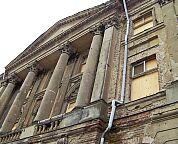
|

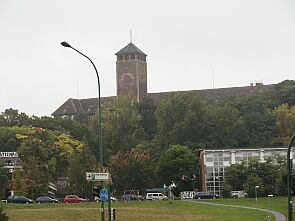 |
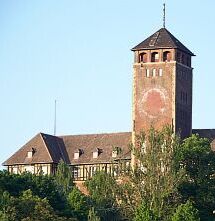 |
Originally, there was just a 150 ft high lookout tower, built in 1804 by King
Frederick William III for his wife, Queen
Louise. In 1813, a number of small fortifications was
added. In 1899, Emperor William II ordered a large building in the style of British country houses. It was designed and built by Franz Schwechten and finished in 1902.  The building served as Military Academy from 1902 until 1919 and then, until 1945 as Imperial Archive. After World War II it was used by the Soviet Military Administration and from 1952 until 1989 it was the seat of the Communist Party's district committee. |
 |
Remains of the giant Communist Party logo can still be seen at the tower, which is why people still call it by the name it had throughout the entire communist period: "The Kremlin." In 1991, it was completely renovated and became seat of the Brandenburg State Parliament. |


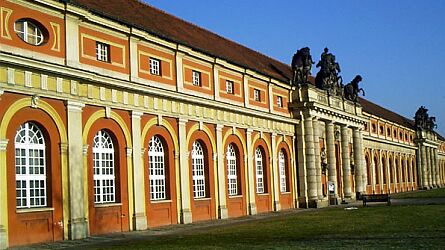 |
And with that, we have reached 1 Breite Straße - the very first building in the street, the only remaining building of Potsdam's Renaissance period
and the only remaining original part of the City Castle: The Royal Stables, built in 1685 by Johann Arnold
Nering. Today, the building is home of Germany's oldest Film Museum.  Across the street is one of Potsdam's tallest buildings, the 17-floors high Hotel Mercure, built in 1969.  XXXXXXXXRoyal Stables and Hotel Mercure |
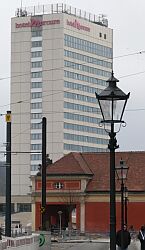
|
| We have an entire extra site about the Royal Stables, but we couldn't think about anything to write about a tall concrete slab building that is called "The Box" by locals. |



 |
This site is part of our Potsdam, Germany site. Click the left turn sign to get back to the
Potsdam Start Site.
 If you came here from our Vacation 2010 sites, click the green traffic light to return. |

|

 Back to Potsdam Page |
 Back to Home Towns |
 Back to Germany Page |
 Back to English Main Page |
 Back to Start Page |